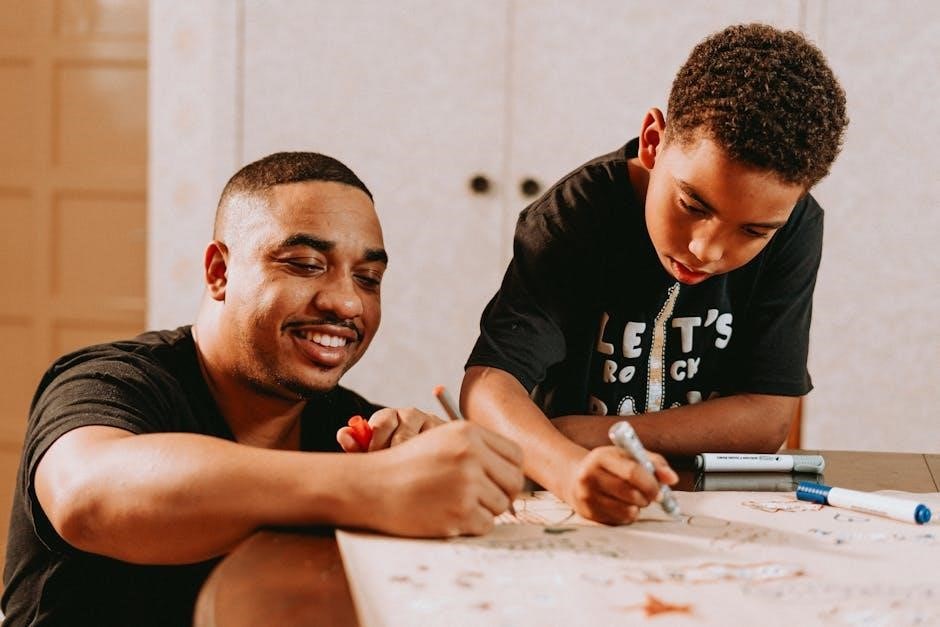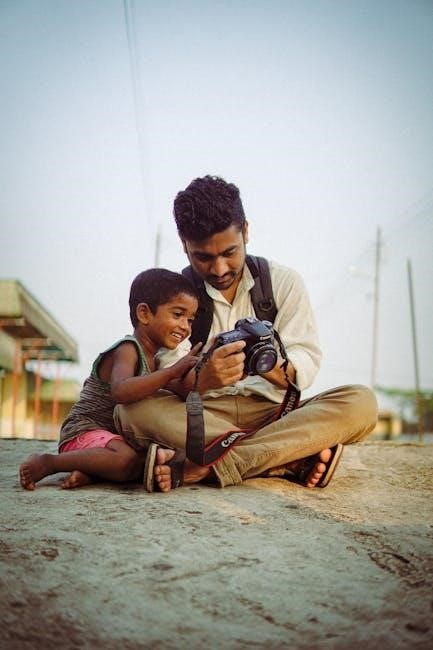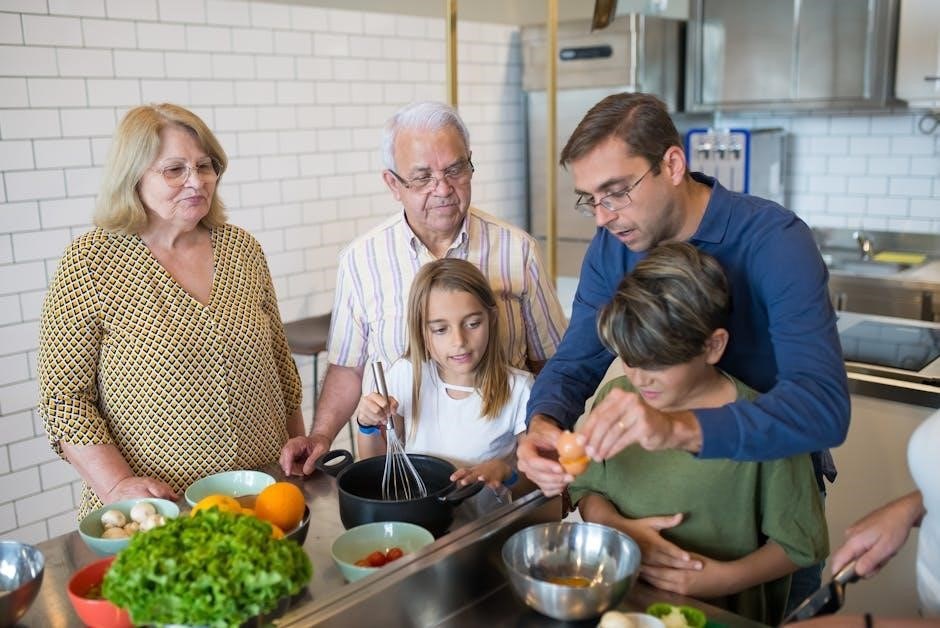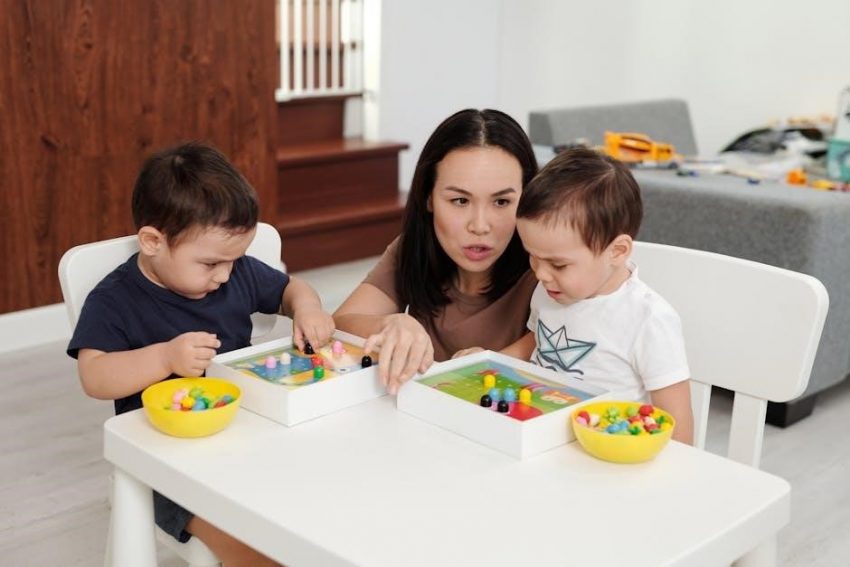This guide provides an overview of the 2002 film Crossroads, starring Britney Spears, to help parents assess its suitability for their children, covering mature themes and content.
1.1 Overview of the Guide
This guide offers a detailed analysis of the 2002 film Crossroads, focusing on its content, themes, and suitability for young audiences. It provides insights into the movie’s PG-13 rating, mature themes, and key scenes, helping parents make informed decisions about their child’s viewing experience. The guide also includes tips for discussing sensitive topics with teens, ensuring open communication and guidance.
1.2 Purpose and Scope
The purpose of this guide is to equip parents with essential insights into the content and themes of Crossroads, enabling informed decisions about their child’s viewing. Its scope includes a detailed review of mature themes, such as rape, teen pregnancy, and miscarriage, as well as discussions of violence, sexual content, and substance use. The guide also provides tips for fostering open conversations and addressing sensitive topics, ensuring parents can offer guidance and support effectively.
Movie Content Rating
Crossroads is rated PG-13 for sexual content, brief teen drinking, and mature themes. This rating reflects the films inclusion of sensitive topics and situations.
2.1 PG-13 Rating Explanation
The PG-13 rating for Crossroads is due to its mature themes, including discussions of rape, teen pregnancy, and miscarriage. The film also contains brief scenes of underage drinking and mild sexual references. While the violence is mostly off-screen, there are instances of harassment and bullying. The rating reflects the films suitability for teens aged 13 and older, with parental guidance recommended due to its sensitive content.
2.2 MPAA Guidelines
The film Crossroads received a PG-13 rating from the MPAA for sexual content, brief teen drinking, and language. The rating reflects the movies inclusion of mature themes, such as discussions of rape and teen pregnancy, while avoiding explicit nudity or graphic violence. The MPAA guidelines suggest parental guidance for viewers under 13 due to these elements, ensuring the content is appropriate for older teens with adult supervision.

Mature Themes in Crossroads
Crossroads addresses serious issues like rape, teen pregnancy, and miscarriage, offering a realistic portrayal of teenage struggles and emotional challenges, while emphasizing friendship and personal growth.
3.1 Discussions of Rape and Teen Pregnancy
The film includes candid discussions of rape and teen pregnancy, with Mimi’s character facing pregnancy and miscarriage, highlighting the emotional and physical challenges these situations entail. These themes are portrayed sensitively, aiming to spark reflection among young viewers about the consequences of such experiences and the importance of support systems. Parents should be prepared to address these topics with their teens.
3.2 Handling of Miscarriage
The film addresses miscarriage through Mimi’s traumatic experience, portrayed with sensitivity but without explicit details. It highlights the emotional toll and the importance of support during such events. Parents are encouraged to use this depiction as a starting point for discussions about loss, resilience, and the emotional challenges faced by teenagers in difficult situations.
3.4 Impact on Teenage Audience
The film’s exploration of sensitive topics like rape, pregnancy, and miscarriage may resonate deeply with teenagers, prompting reflection on life’s challenges. However, the mature themes and emotional intensity could be overwhelming for younger or sensitive teens. Parents should consider their child’s emotional maturity before allowing viewing, as the film’s messages about friendship, self-discovery, and resilience may inspire growth but also require guidance and open discussion.

Violence and Intense Scenes
The film includes scenes of characters falling down stairs, punching, and harassment, with most violence occurring off-screen, but still intense enough to warrant parental caution for younger viewers.
4.1 On-Screen Violence
The film includes scenes of characters falling down stairs and punching one another, with a man harassing a woman at a bar. While most violence is off-screen, the on-screen content involves physical altercations and intense moments that may disturb younger viewers. Parents should be aware of these scenes, as they could be upsetting for sensitive children, despite the lack of graphic detail or excessive gore.
4.2 Harassment and Bullying
The film portrays scenes of harassment and bullying, including a man aggressively dancing with a woman at a bar and fat-shaming remarks. These moments highlight the emotional challenges faced by the characters, such as social conflicts and self-esteem issues. Parents should be aware of these scenes, as they may trigger discussions about respect, boundaries, and the impact of hurtful behavior on individuals. The film does not shy away from showing the consequences of such actions, offering opportunities for meaningful conversations about empathy and kindness. Additionally, the characters’ experiences with bullying and harassment serve as a reflection of real-life teen struggles, making it essential for parents to guide younger viewers in understanding these complex social dynamics. While the portrayals are not overly explicit, they are impactful and warrant parental discretion to ensure children grasp the seriousness of these issues. The movie’s depiction of harassment and bullying underscores the importance of addressing these topics openly and honestly, providing a platform for parents to discuss the emotional and psychological effects with their teens. Furthermore, the film’s handling of these sensitive subjects can help teens develop a deeper understanding of the importance of kindness and respect in their own relationships. By exploring these themes, the guide aims to equip parents with the tools to navigate these conversations effectively, fostering a supportive environment for their children to grow and learn from the film’s messages. The inclusion of these scenes also serves as a reminder of the prevalence of harassment and bullying in adolescent life, encouraging parents to be vigilant and proactive in helping their teens cope with such challenges. Overall, the film’s portrayal of harassment and bullying is a critical aspect of its narrative, offering both a reflection of reality and a catalyst for important discussions about empathy, respect, and resilience. Parents are encouraged to use these scenes as a starting point for open and honest dialogue, helping their children to develop a strong moral compass and a deeper understanding of the impact of their words and actions on others. By doing so, the guide hopes to empower parents to play an active role in shaping their children’s values and fostering a more compassionate and inclusive environment, both at home and in their broader communities. The film’s exploration of harassment and bullying, while challenging, presents a valuable opportunity for growth and education, making it a key focus of this parents’ guide.

Sexual Content and Nudity
The film includes mild sexual references and implications of prostitution, but no explicit nudity is shown. Scenes, like Lucy dancing in her underwear, are brief and non-explicit.
5.1 Sexual References
The film contains mild sexual references, including discussions of rape and teen pregnancy. Lucy dances in her underwear, and there are implied situations, such as prostitution, though nothing explicit is shown. These references are brief and not overly detailed, but they may still require parental discretion depending on a child’s maturity level and understanding of such themes.
5.2 Implications of Prostitution
The film subtly touches on prostitution through implied scenarios, such as a teenage runaway considering risky situations. These references are not explicit but may go over younger viewers’ heads. Parents should be cautious, as the themes could spark questions or require discussions about safety and exploitation. The content is handled discreetly, but it’s essential for parents to guide their children in understanding the gravity of such issues.
Profanity and Language
The film includes mild profanity, with terms like “hell,” “bitching,” “damn,” and “trailer trash.” These words are used sparingly, fitting the teen-focused narrative but warrant parental awareness.
6.1 Use of Profane Language
The film incorporates mild profanity, including words like “hell,” “bitching,” “damn,” and “trailer trash.” These expressions are scattered throughout the dialogue, reflecting the characters’ emotions and situations. While not excessively frequent, they are present enough to warrant consideration for younger audiences. The language aligns with the movie’s teen-oriented themes but may require parental discretion depending on individual sensitivity levels.
6.2 Context and Appropriateness
The use of profane language in Crossroads is contextual, reflecting the characters’ emotional struggles and real-world teen interactions. While not excessive, the language may not be suitable for younger audiences. Parents should consider their child’s sensitivity to such content. The film’s dialogue aims to portray authentic teenage dynamics, balancing relatability with mild profanity that aligns with its PG-13 rating and mature themes.
Substance Use and Teen Drinking
The film depicts underage drinking and references alcohol use, highlighting its consequences and impact on decision-making, providing context for parent-teen discussions on substance use.
7.1 Depiction of Underage Drinking
The film portrays scenes of underage drinking, primarily in social settings, with characters consuming alcohol during parties and road trips. These moments are often linked to poor decision-making and emotional vulnerability. While the consequences of excessive drinking are implied, the portrayal is not excessively graphic. Parents should note that such depictions may influence impressionable viewers, making it essential to discuss the risks and responsibilities associated with alcohol use.
7.2 Consequences of Alcohol Use
The film highlights the consequences of underage drinking through characters’ poor decisions and emotional vulnerabilities. A scene implies a character was raped after getting drunk, leading to pregnancy and miscarriage. These portrayals emphasize the potential risks of alcohol use, such as regrettable actions and long-term emotional distress. Parents can use these moments to discuss the importance of responsible choices and the impact of alcohol on decision-making and life outcomes.

Target Audience and Suitability
The film primarily targets teenagers but requires parental guidance due to mature themes. It is not suitable for younger children due to its serious and sensitive content.
8.1 Appropriateness for Teenagers
The film is suitable for mature teenagers due to its exploration of self-discovery and friendship. However, its themes of rape, pregnancy, and miscarriage require parental guidance. While it encourages personal growth, the sensitive content may not be appropriate for younger teens. Parents should consider their child’s maturity level before allowing them to watch, as the movie tackles complex issues that need context and discussion.
8.2 Guidance for Younger Viewers
The film contains mature themes and content that may not be suitable for younger viewers. Parents should exercise discretion, as the movie addresses topics like rape, pregnancy, and miscarriage. While it promotes self-discovery and friendship, its complex issues require guidance. Co-viewing and open discussions are recommended to help younger audiences understand the context and emotional depth of the story.

Character Analysis and Development
The film explores the personal growth and relationships of its main characters, focusing on their emotional journeys and self-discovery during a transformative road trip experience.
9.1 Lucy’s Journey and Struggles
Lucy, portrayed by Britney Spears, faces internal conflicts as she navigates her high school graduation and a premed program. She struggles with her father’s expectations and her own desires, leading her to join a road trip. Her journey is marked by self-discovery and emotional growth, as she learns to balance her aspirations with her personal identity, making her a relatable character for young audiences.
9.2 Mimi and Kit’s Story Arcs
Mimi, played by Taryn Manning, deals with teen pregnancy and miscarriage, her story adding emotional depth. Kit, portrayed by Zoe Saldana, faces challenges with her engagement and infidelity, exploring themes of loyalty and identity. Both characters undergo significant personal growth, their arcs intertwining with Lucy’s journey, fostering a powerful narrative of friendship and resilience that resonates with teenage viewers.
Lessons and Takeaways for Teens
Crossroads emphasizes themes of friendship, courage, and self-discovery, encouraging teens to embrace their individuality and navigate life’s challenges with resilience and authenticity.
10.1 Friendship and Courage
The film highlights the power of friendship as Lucy, Mimi, and Kit navigate their journey, showcasing how courage and loyalty strengthen bonds. Their experiences demonstrate that true friends support each other through life’s challenges, fostering resilience and trust. The story emphasizes that courage is not just about facing fears but also about standing by those you care about, even when the path is uncertain.
10.2 Self-Discovery and Growth
The film explores themes of self-discovery as the characters confront their insecurities and ambitions. Lucy, Mimi, and Kit each undergo personal growth, learning to let go of societal expectations and embrace their true selves. Through their journey, they realize the importance of self-awareness and the value of pursuing their own paths, highlighting that growth comes from facing challenges and understanding one’s identity.

Parental Guidance and Discussion Tips
Encourage open conversations about the film’s themes, such as rape, pregnancy, and self-discovery. Ask questions about the characters’ decisions and their consequences to foster reflection and understanding.
11.1 Encouraging Open Conversations
Parents should foster open dialogue with teens about Crossroads, discussing themes like rape, pregnancy, and self-discovery. Encourage questions and reflections on the characters’ decisions and consequences. This helps teens process complex emotions and lessons from the film, promoting deeper understanding and critical thinking about real-life issues and moral dilemmas.
11.2 Addressing Sensitive Topics
When discussing Crossroads, parents should approach sensitive topics like rape, miscarriage, and teen pregnancy with care. Encourage teens to share their thoughts on how the film handles these issues. Discuss the consequences of underage drinking and the importance of consent. Use the film as a platform to reinforce values and provide guidance, ensuring teens understand the gravity of these topics and their real-life implications.

Cultural and Social Impact
Crossroads influenced teen culture by sparking conversations on sensitive topics and featuring diverse characters, making it a notable film for discussions on identity and societal issues.
12.1 Influence on Teen Culture
Crossroads impacted teen culture by addressing real-life issues like friendship, self-discovery, and trauma, resonating with young audiences and encouraging open conversations about personal growth and societal expectations. The film’s relatable themes and strong female leads, including Britney Spears, Taryn Manning, and Zoe Saldana, made it a cultural touchstone, particularly for its portrayal of female empowerment and the challenges of adolescence in the early 2000s.
12.2 Representation and Diversity
Crossroads features a diverse cast, including Black and Latino actors, and was written by Shonda Rhimes, a prominent Black female writer. The film’s portrayal of characters from varied backgrounds adds authenticity, though the depth of their stories varies. While it strives to represent different experiences, some critics argue the execution falls short of fully capturing the complexity of these diverse narratives, despite its progressive intent.
Film’s Strengths and Weaknesses
Strengths: The film features strong female characters and a road trip narrative, with Shonda Rhimes’ writing adding depth. Weaknesses: It struggles with uneven pacing and lacks depth in exploring mature themes, feeling disjointed at times.
13.1 Strong Narrative Elements
The film’s narrative explores themes of friendship, self-discovery, and empowerment, with a road trip structure that ties the story together. Writer Shonda Rhimes crafts relatable characters and emotional moments, particularly in addressing traumatic experiences like rape and miscarriage. The movie’s strength lies in its ability to balance lighthearted moments with heavier topics, offering a mix of drama and personal growth that resonates with its young adult audience, despite its flaws.
13.2 Criticisms and Flaws
Critics argue that Crossroads struggles with inconsistent tone and lack of depth, failing to clearly define its target audience. Mature themes like rape and pregnancy are handled heavy-handedly, while lighter moments feel disjointed. Character development, particularly for Kit and Mimi, is underwhelming; The predictable plot and formulaic structure also drew criticism, making the film feel less impactful despite its ambitious themes. These flaws overshadow its potential to deliver a meaningful coming-of-age story.
This guide helps parents make informed decisions about Crossroads. While the film explores themes of friendship and self-discovery, its mature content warrants careful consideration and parental guidance.
14.1 Overall Assessment
Crossroads is a teen drama with mixed reviews, tackling mature themes like rape, pregnancy, and self-discovery. While it offers positive messages about friendship and growth, its execution lacks depth. The film’s PG-13 rating reflects its content, making it suitable for older teens. However, the movie’s confused tone and heavy subject matter may not resonate well with younger audiences. Parents should use discretion, ensuring teens are mature enough to process its complex themes and emotional weight.
14.2 Recommendation for Parents
Parents are advised to preview Crossroads before allowing younger teens to watch. The film’s mature themes, such as rape and teen pregnancy, require open discussions; Encourage teens to reflect on the characters’ journeys and the importance of friendship. While the movie offers valuable lessons, its sensitive content makes it more suitable for older teenagers. Guidance is recommended to help young viewers understand and process the film’s emotional and complex narrative effectively.
Additional Resources for Parents
Parents can find further reading on Crossroads through Common Sense Media and other online platforms offering detailed analyses and discussion guides for teens.
15.1 Further Reading
For deeper insights, parents can explore Common Sense Media, which offers detailed reviews and discussion guides. Additional resources include IMDb and Wikipedia, providing plot summaries, ratings, and behind-the-scenes information. These platforms help parents understand the film’s themes and content, ensuring informed decisions about their child’s viewing experience.
15.2 Supportive Materials
Parents can access additional resources like discussion guides and tips from Common Sense Media, which provides insights into handling sensitive topics. The site offers age-specific advice, helping parents navigate conversations about themes like rape, teen pregnancy, and self-discovery. These materials empower parents to address the film’s mature content effectively and foster meaningful discussions with their teens.

